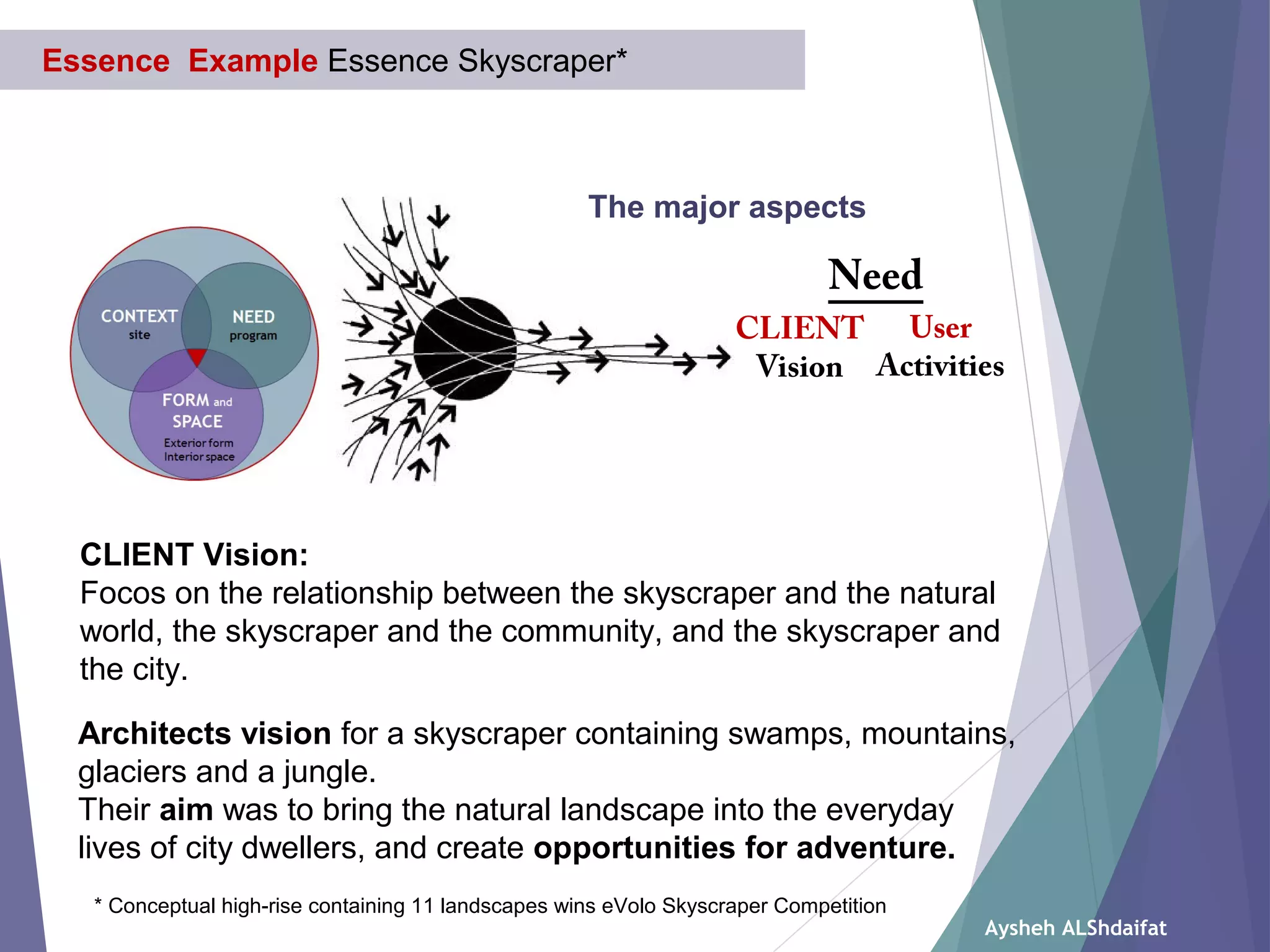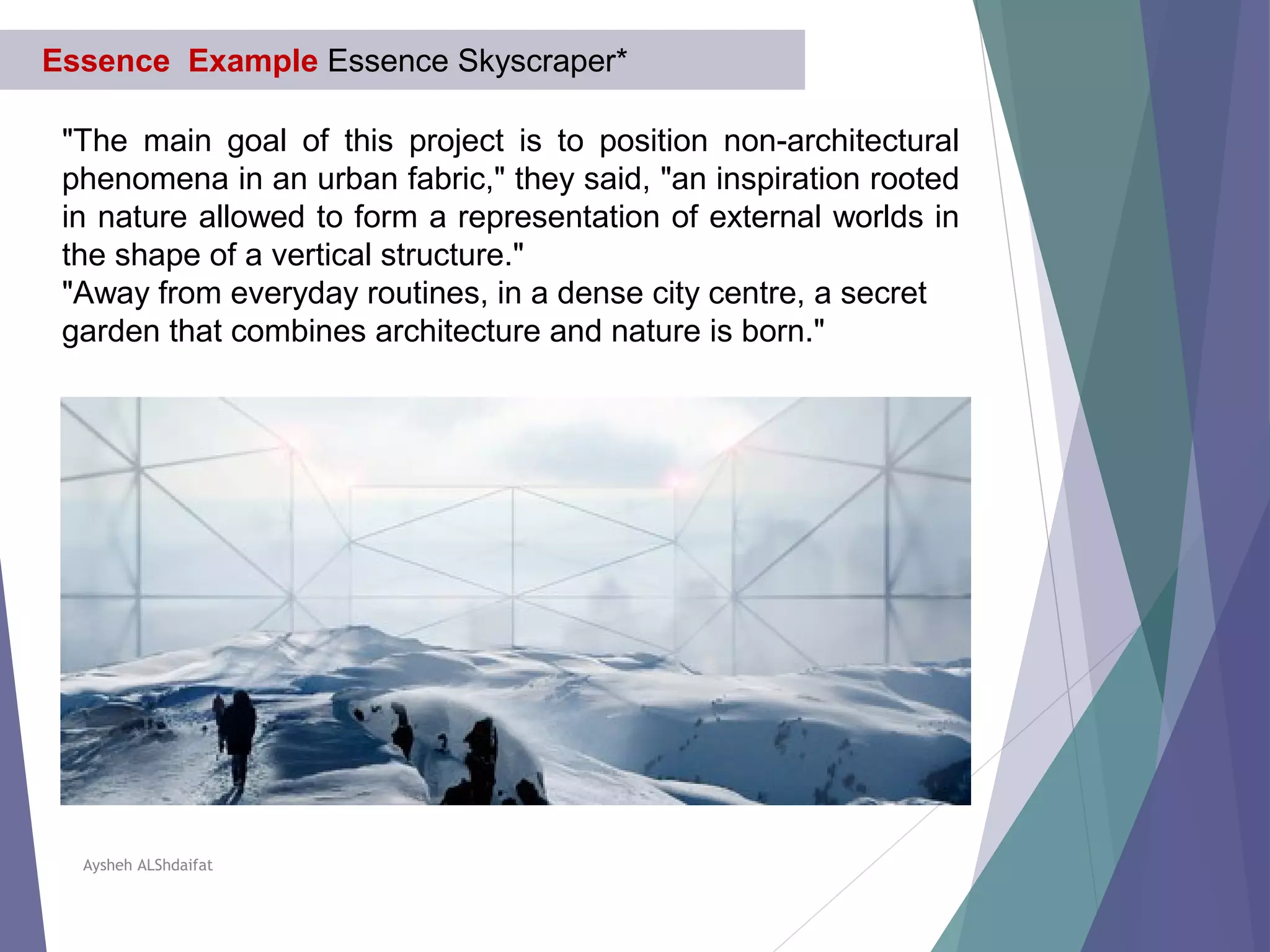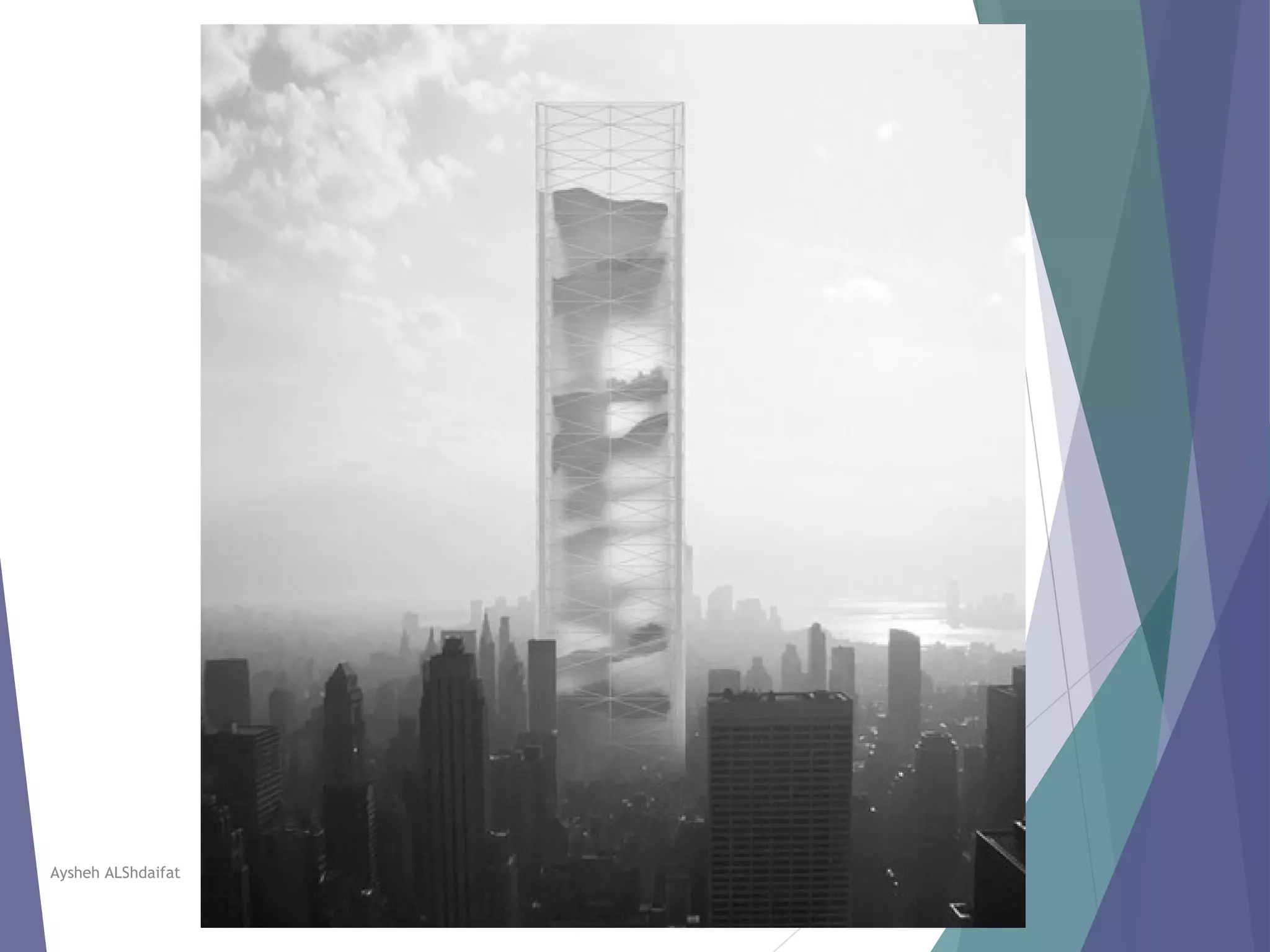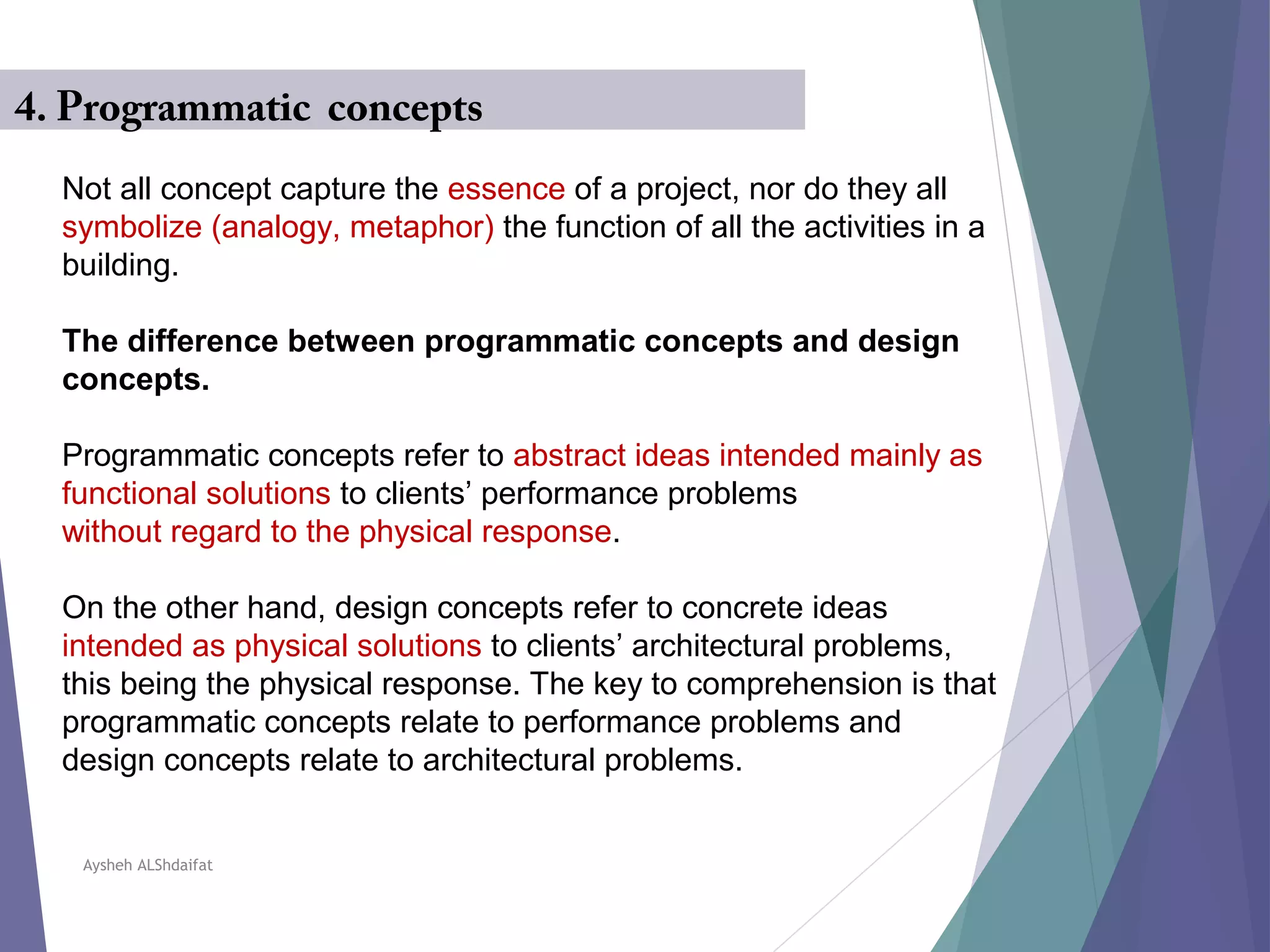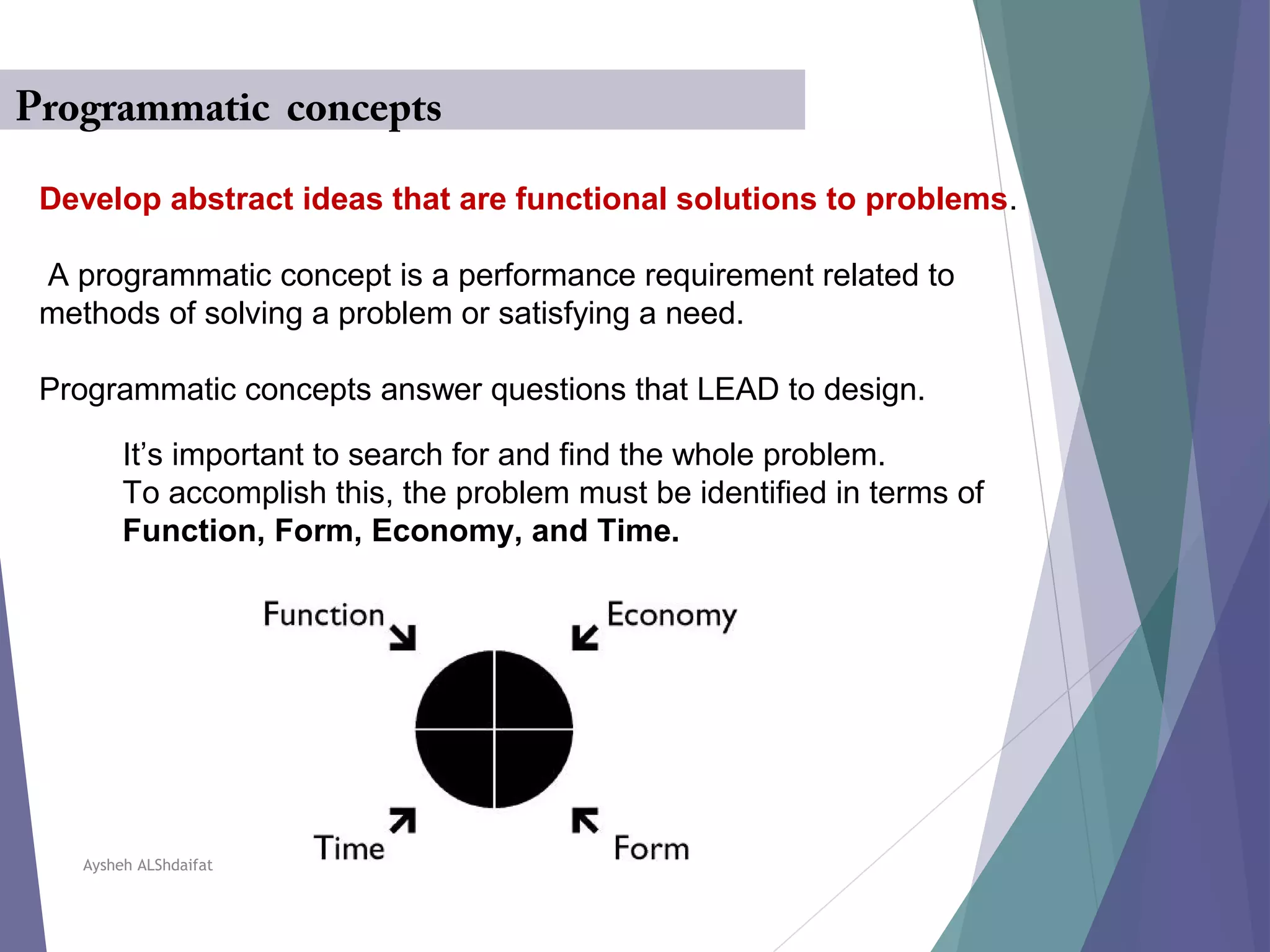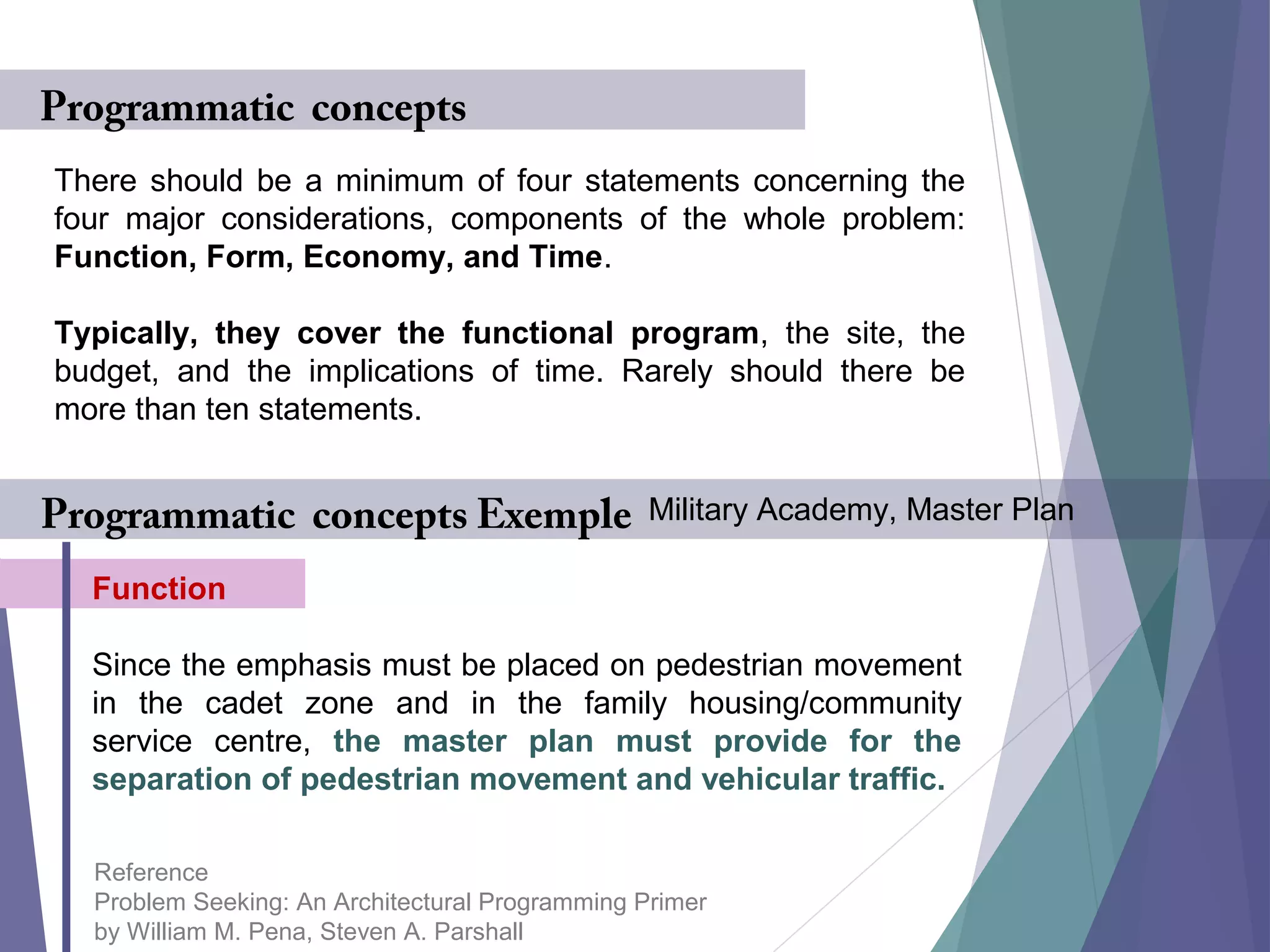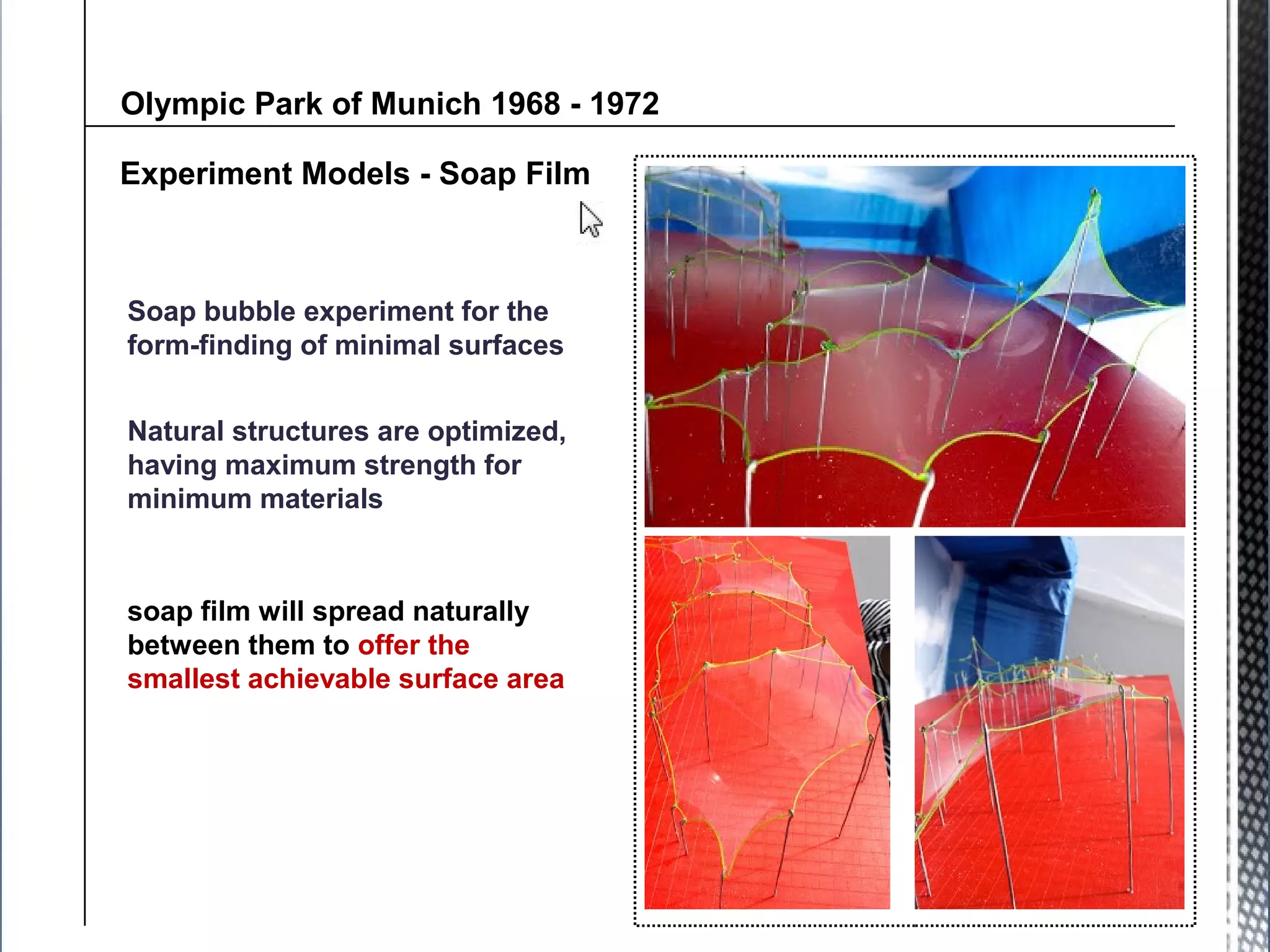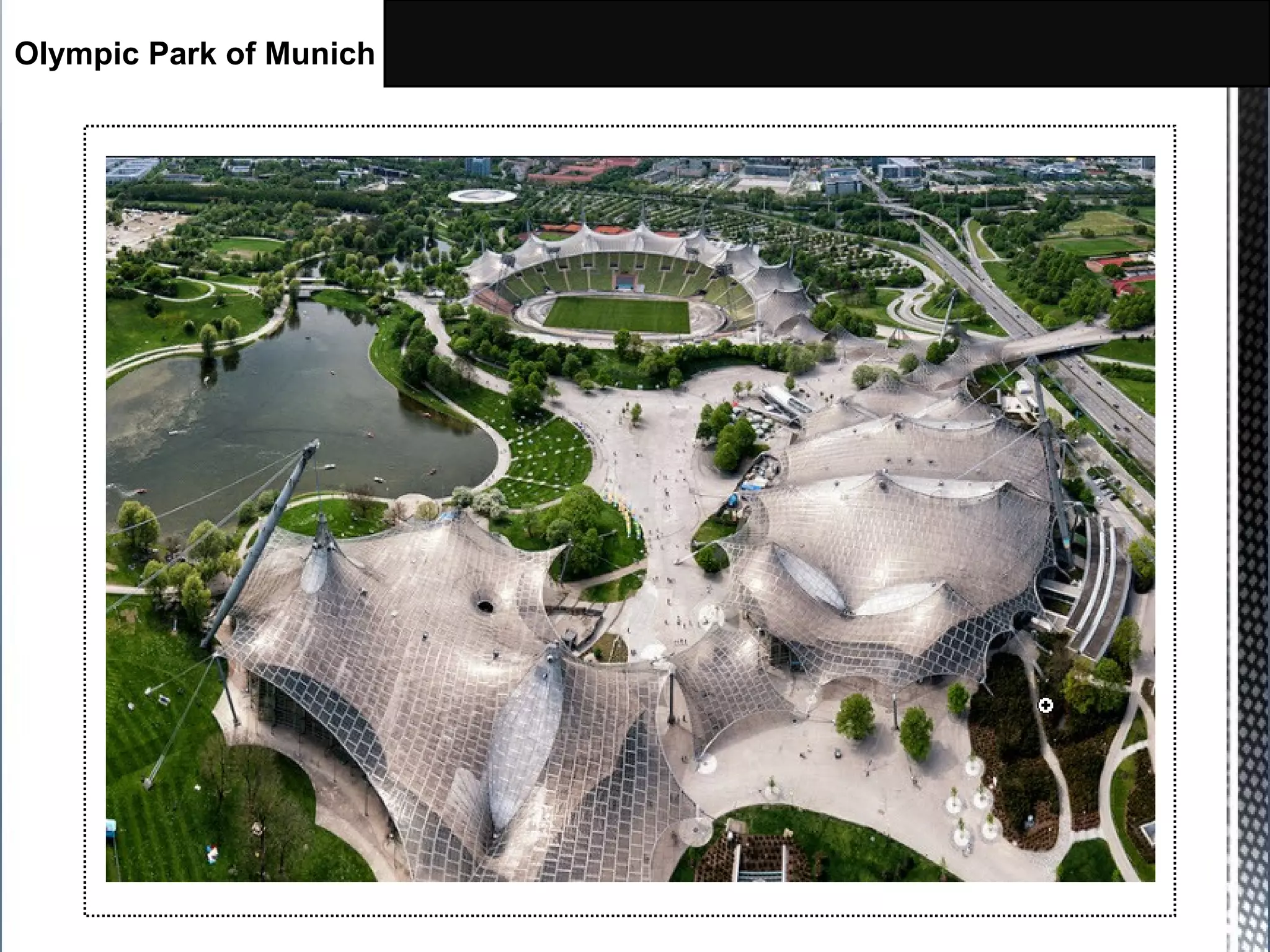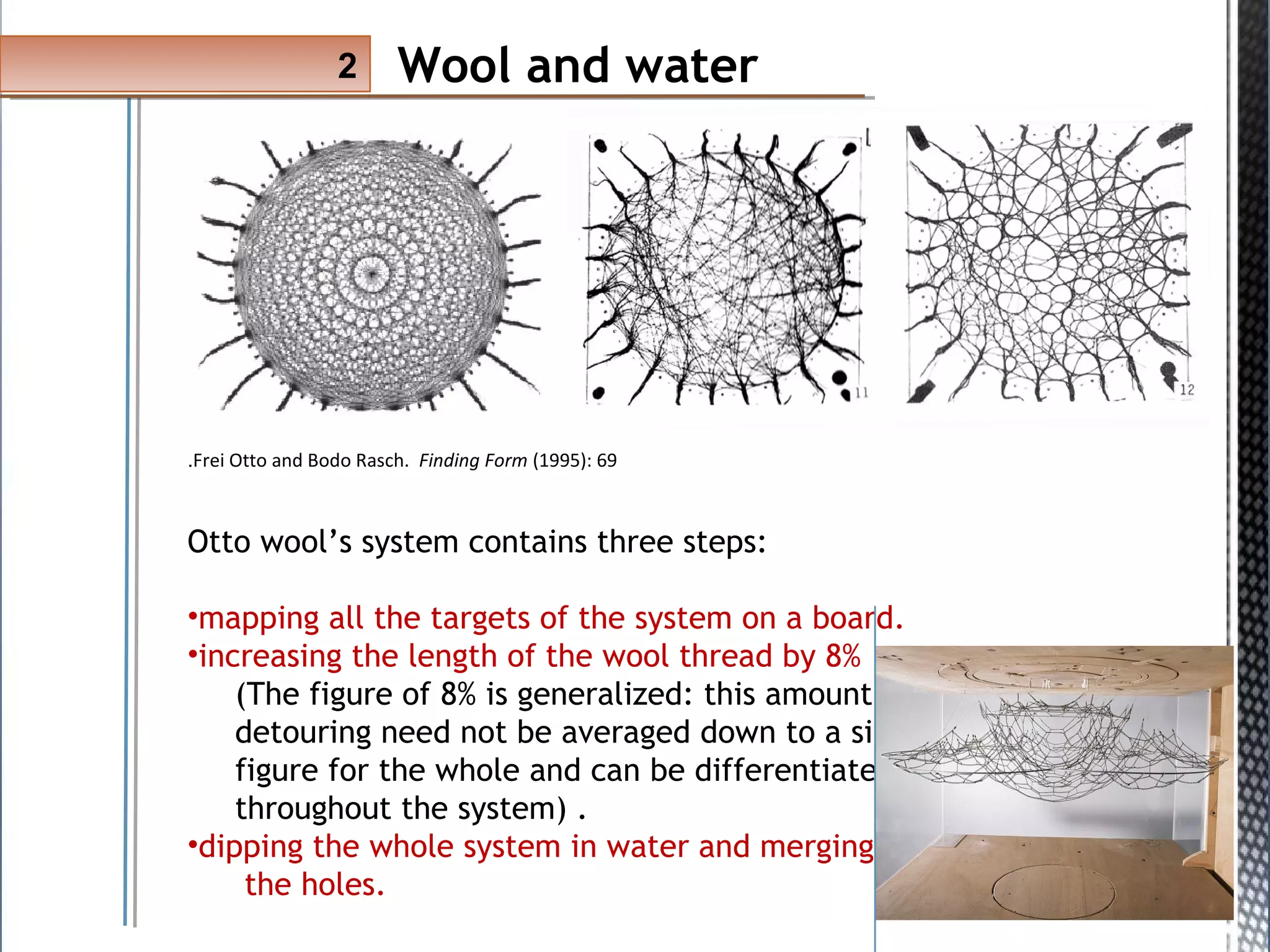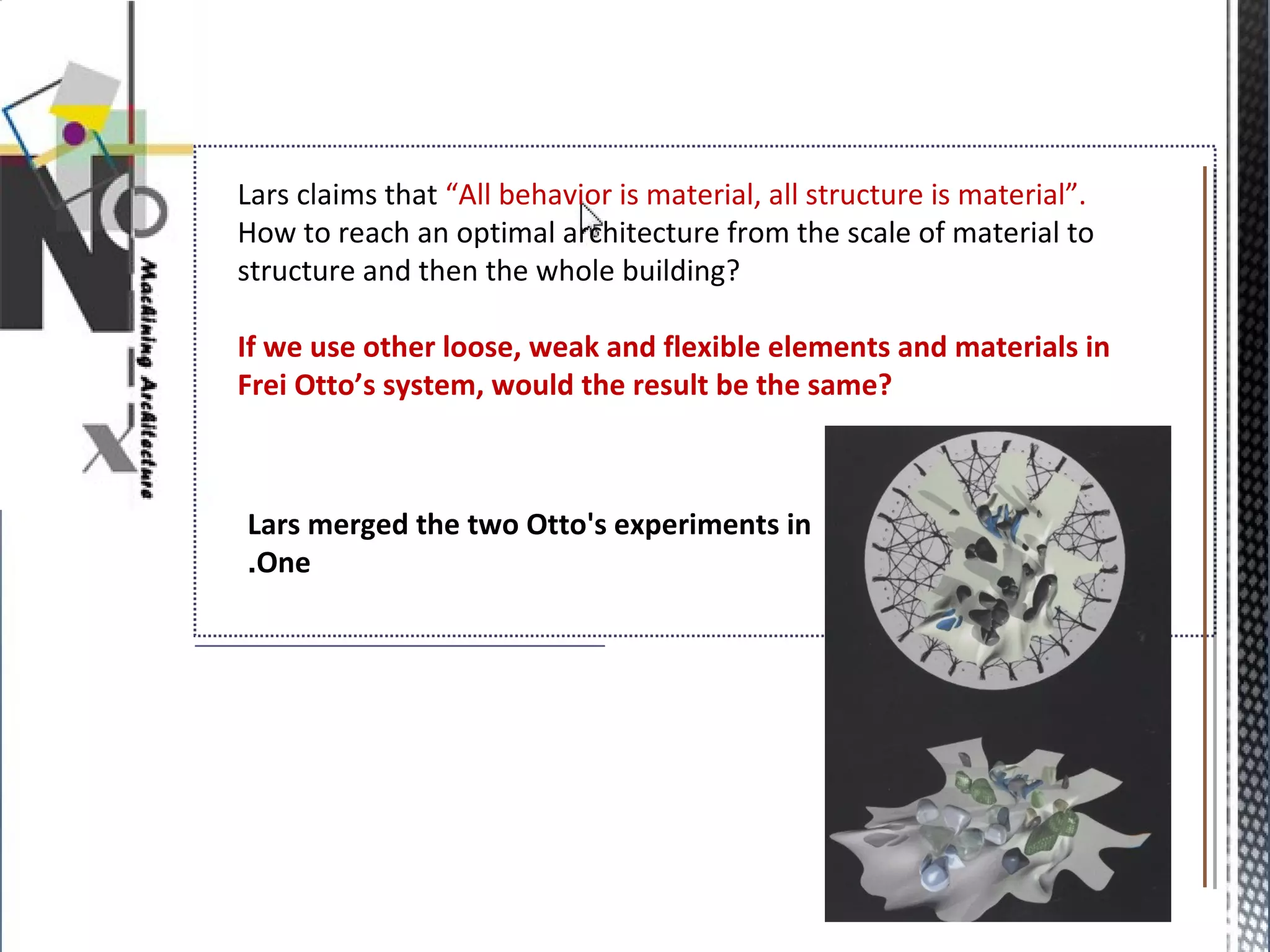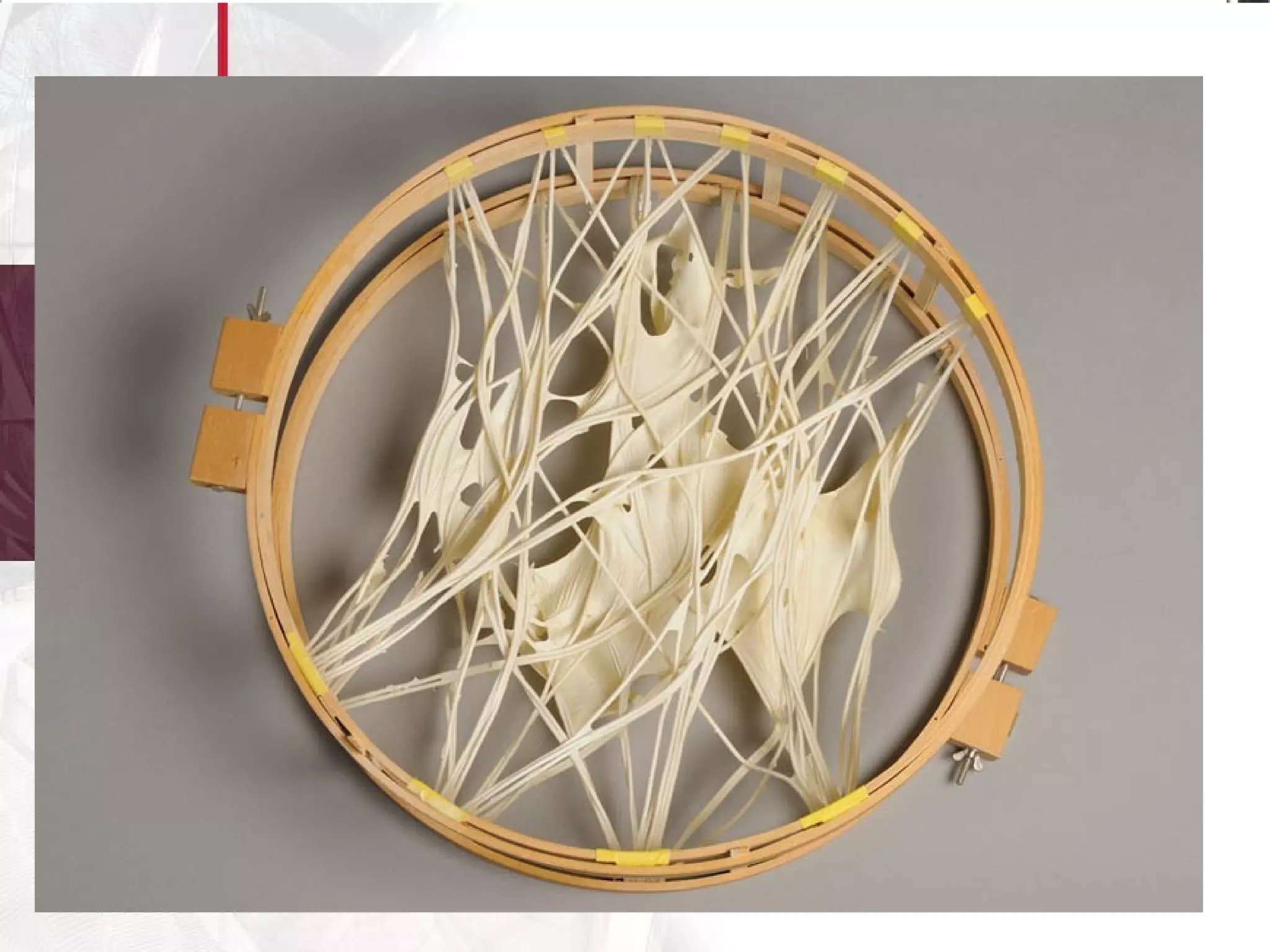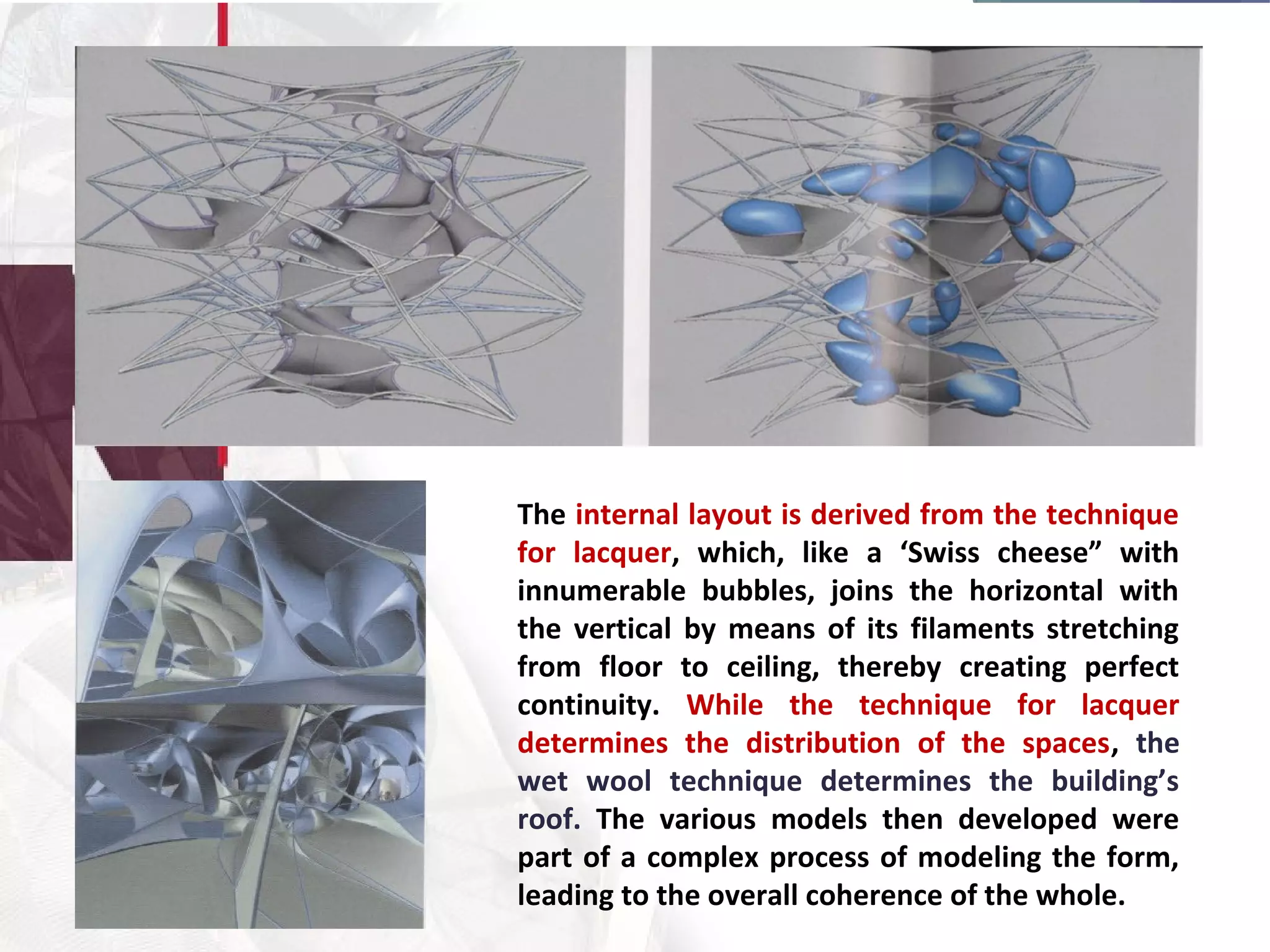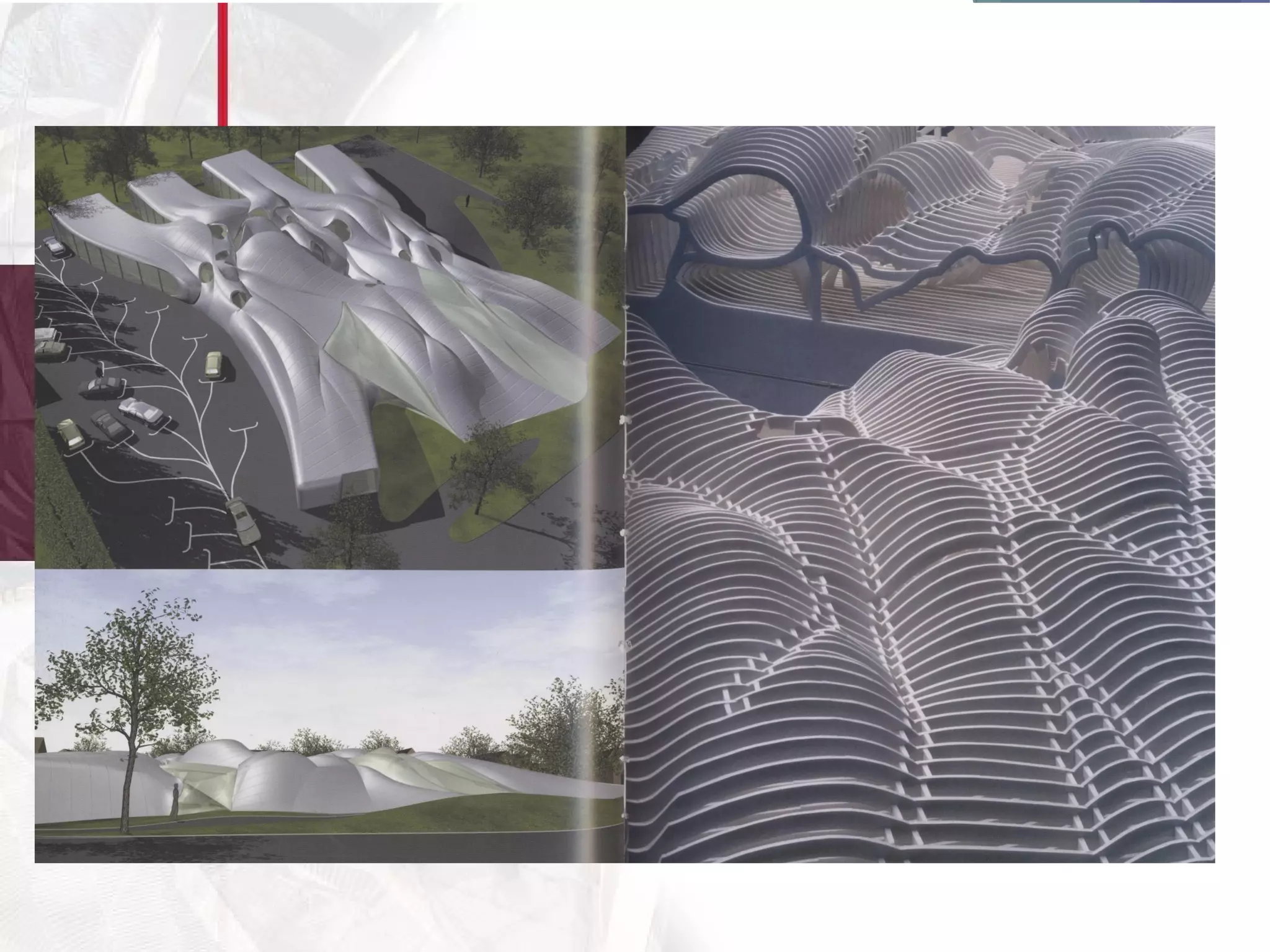The document discusses various architectural concepts including analogies, metaphors, essences, and programmatic concepts. It provides examples of each concept type, such as Face House in Kyoto using an analogy of a face, and the Sydney Opera House using metaphors of a sailing ship, hat, or pencil sketch. Essences focus on distilling information down to the major aspects or "heart of the matter". Programmatic concepts look at stated requirements.
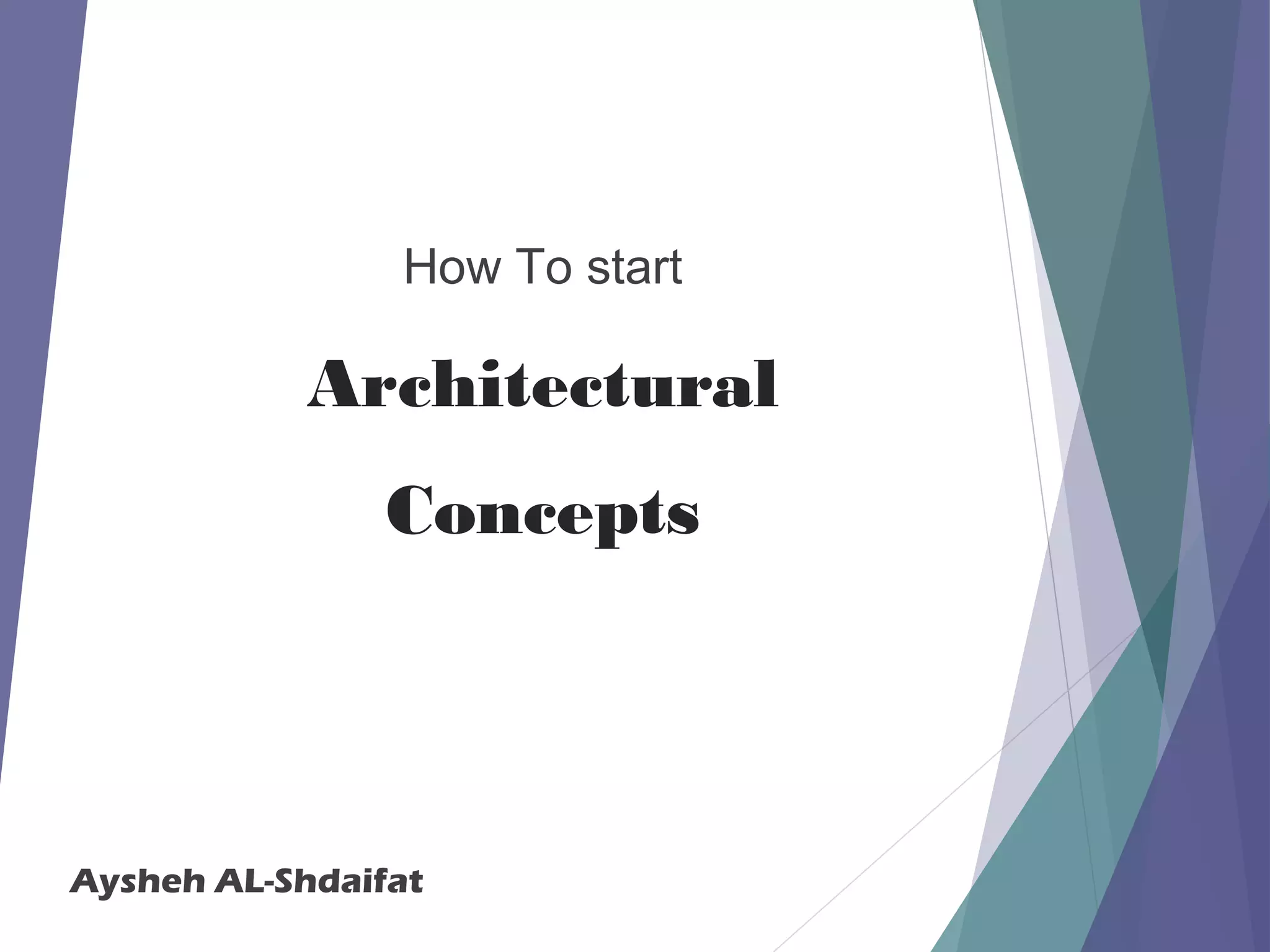







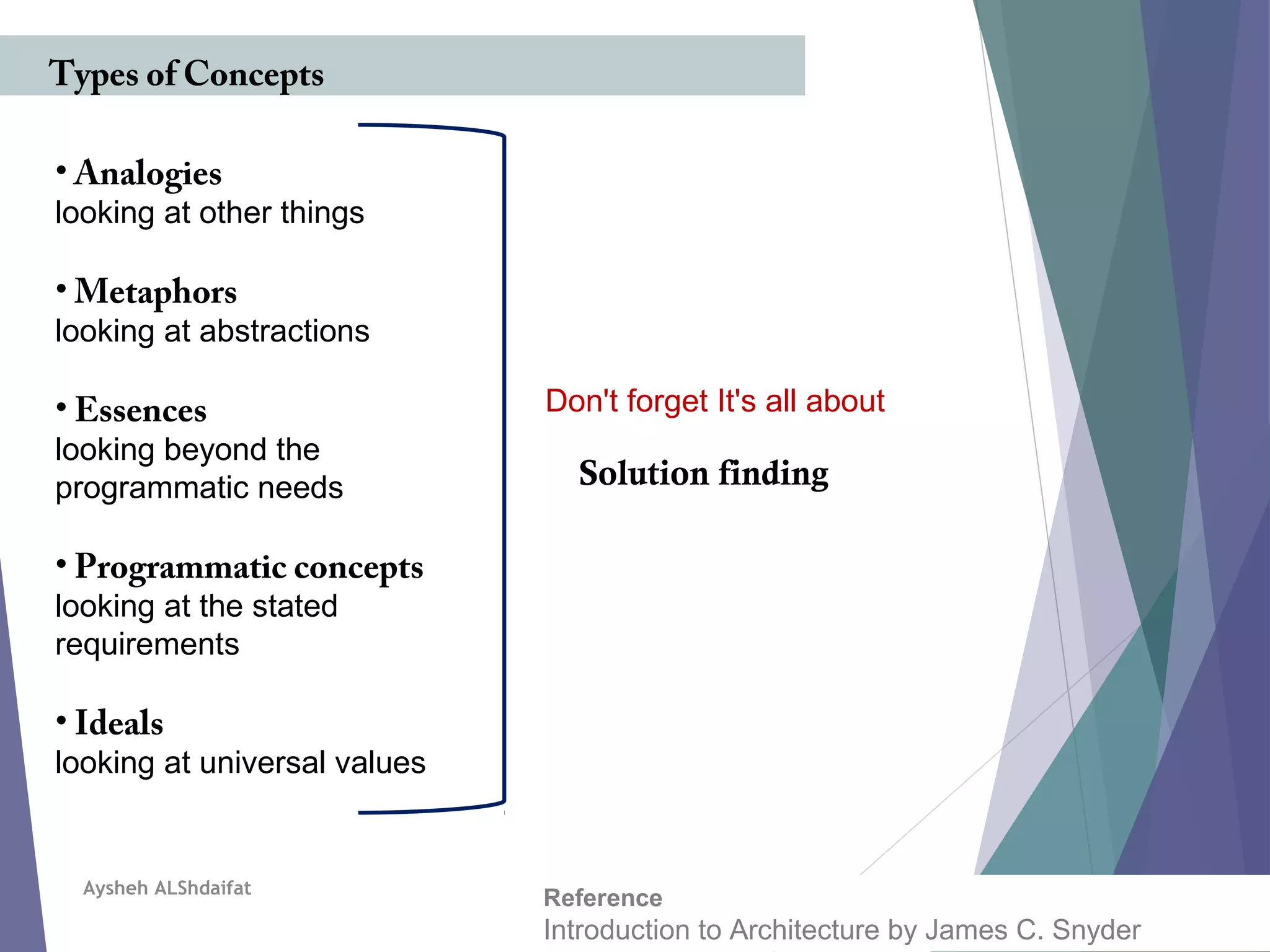

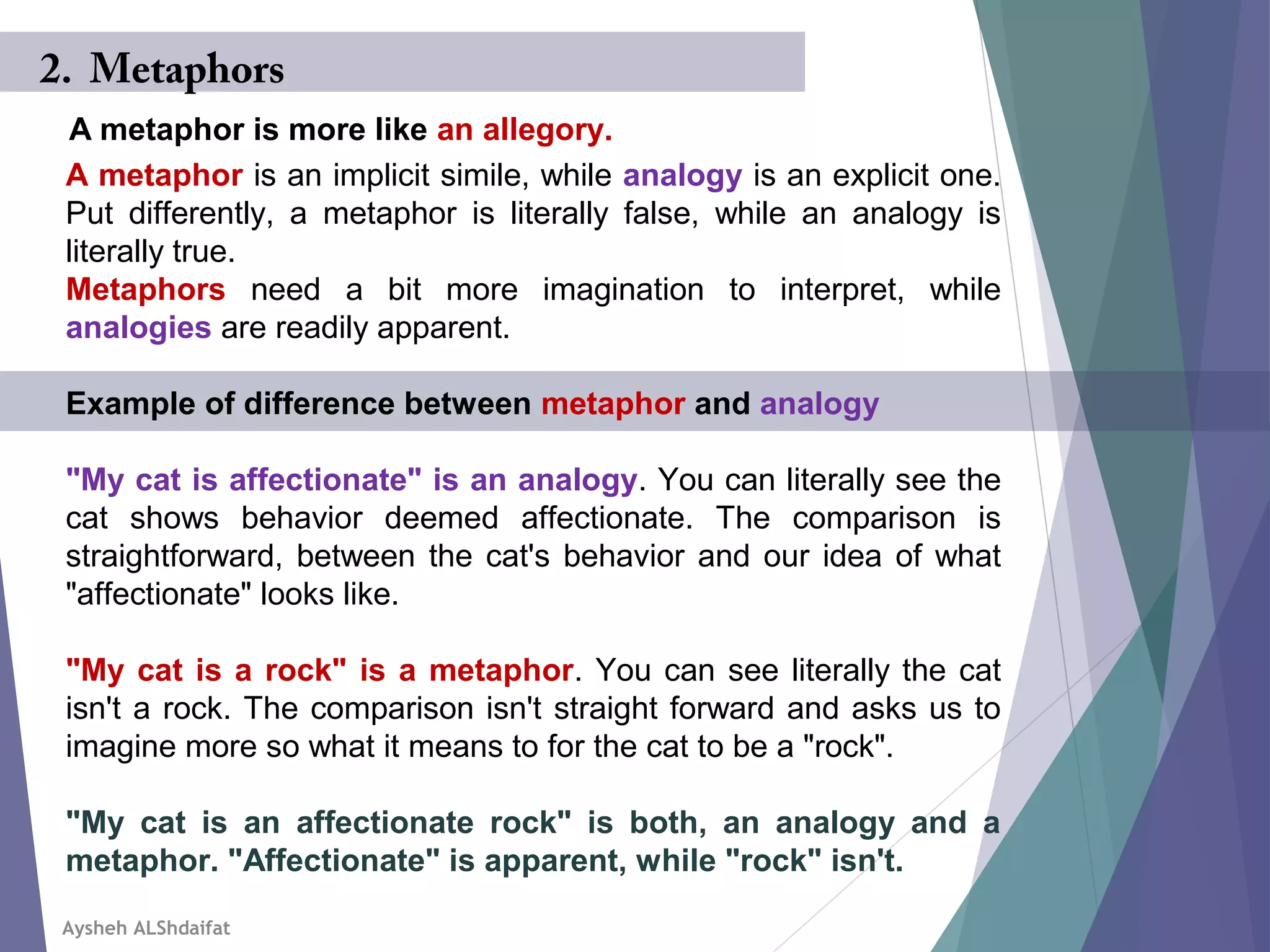




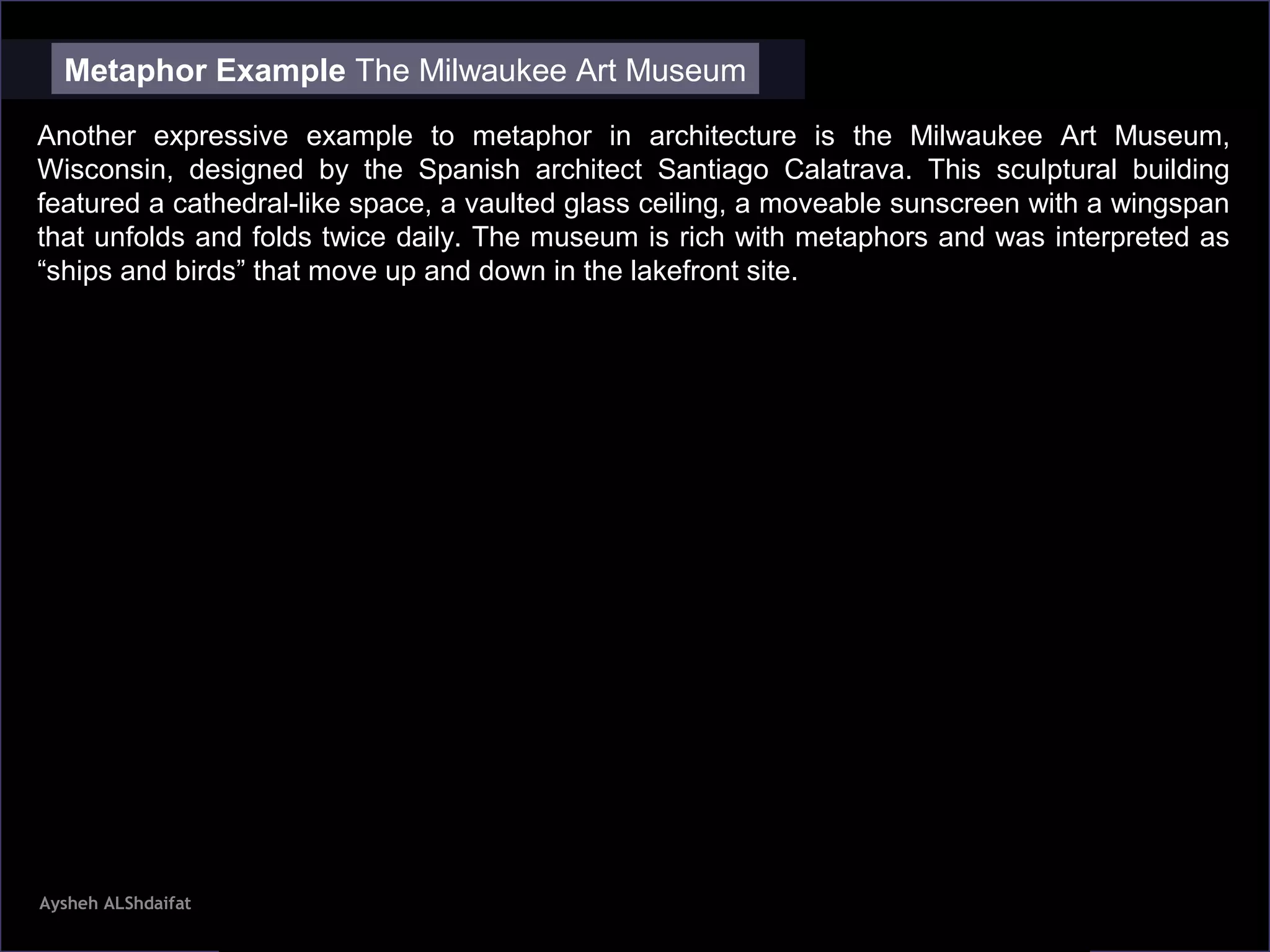
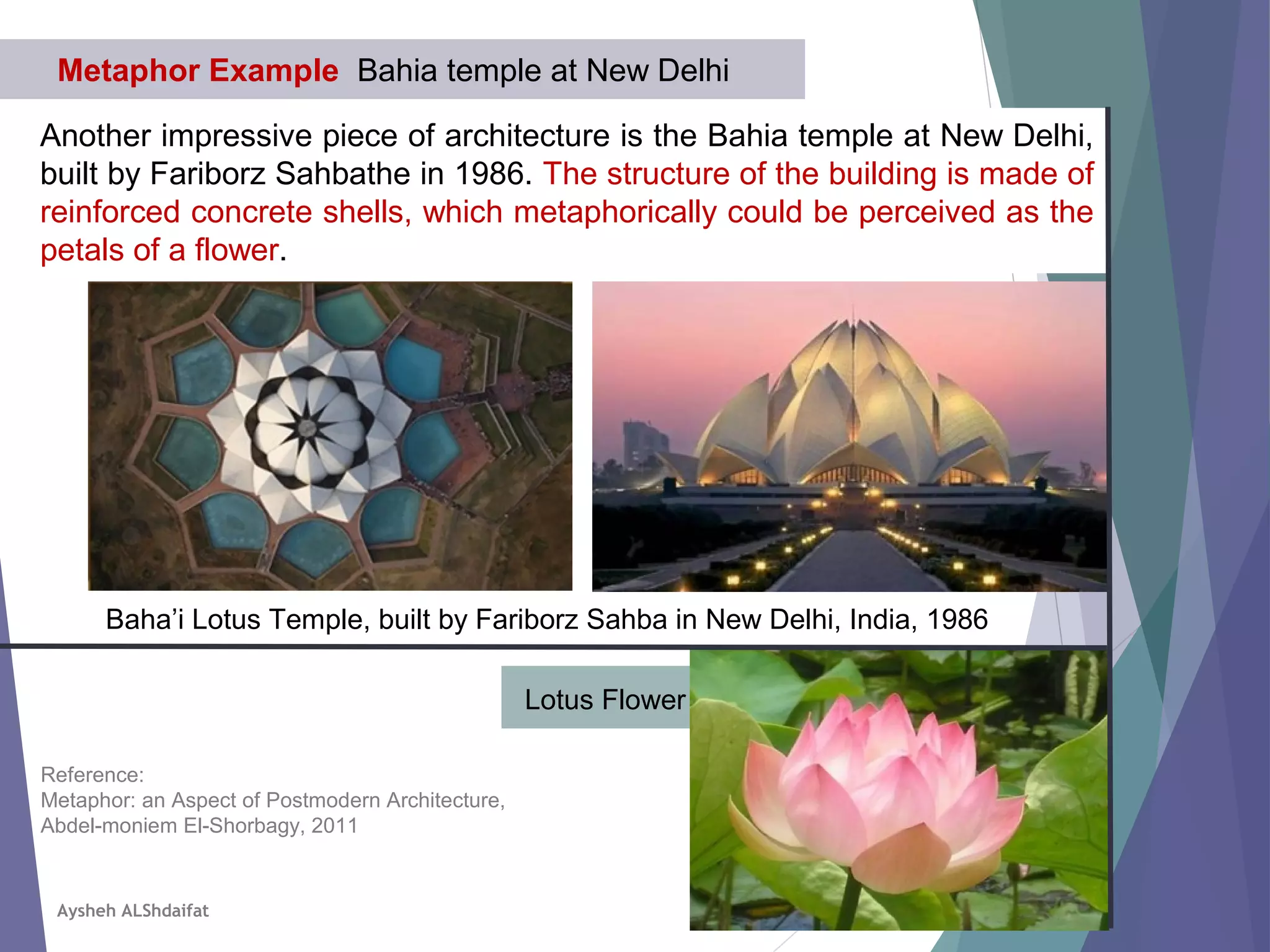
![Aysheh ALShdaifat
Analogy Example Face House
Face House in Kyoto, Japan by Kazumasa Yamashita.
Face House - the client is a graphic designer
‘The face was emphasized so that we couldn't see anything
else ‘’(Jencks, 1993,p.183(.
A joke applied to the very unjokey box-like form of the whole
Yamashita’s ‘I tried to find a solution by employing a simple
and economic box structure [reinforced concrete], adding
small but effective and functional accessories to the facade’](https://image.slidesharecdn.com/architecturalconcepts-181120164853/75/Architectural-concepts-18-2048.jpg)




